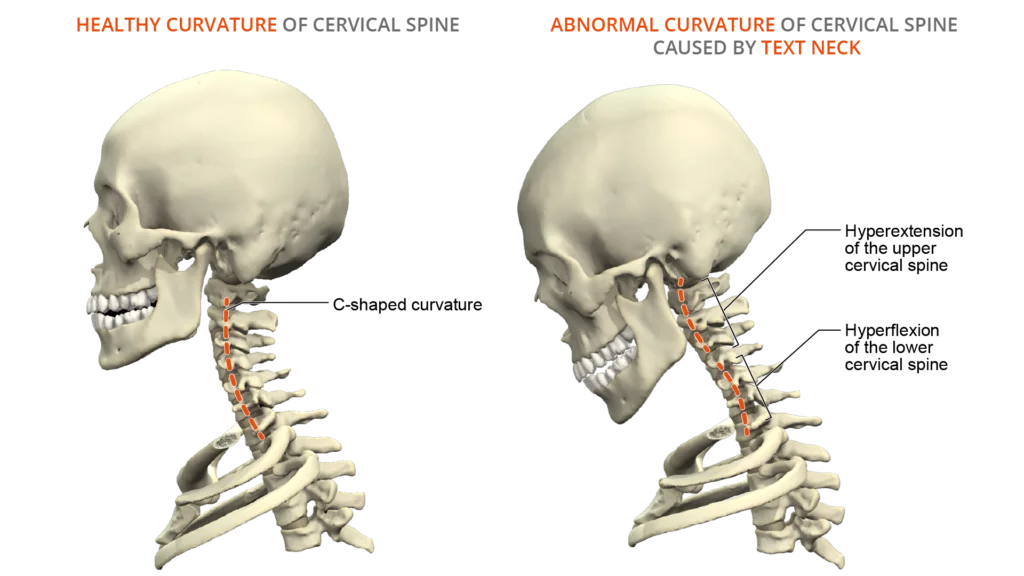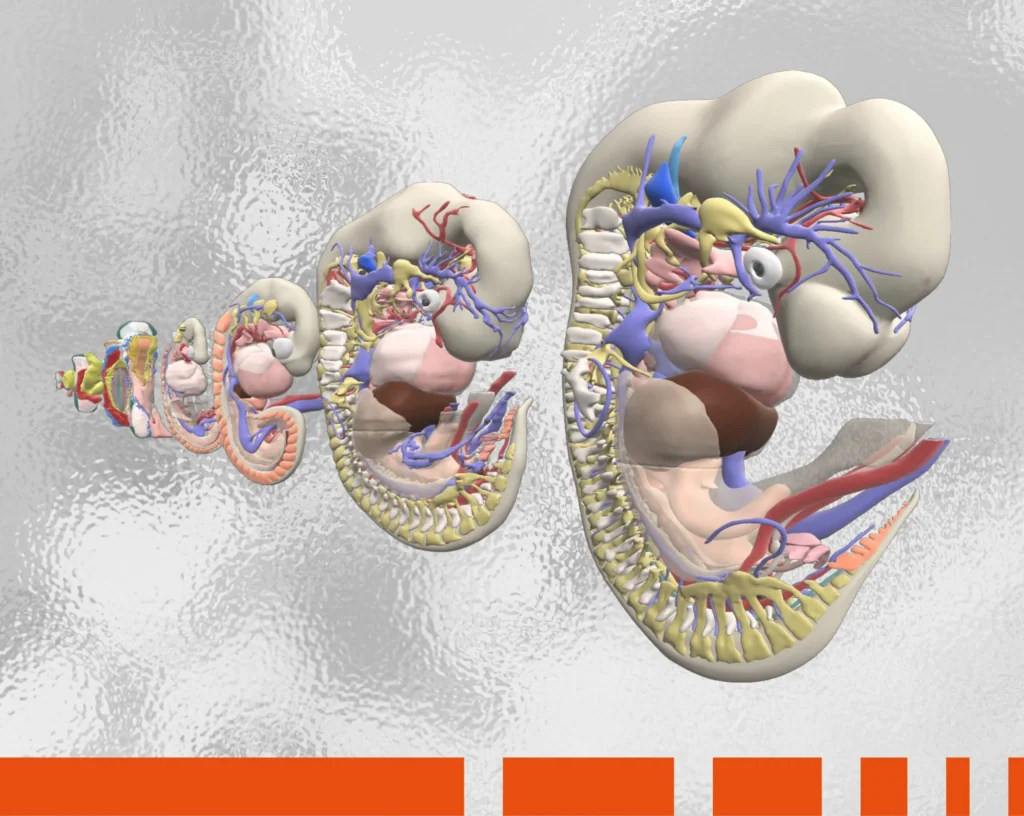If you’re reading this on your phone or tablet, what is your head doing right now? Is it poking forward while you look down? If so, keep reading, as this blog post is all about you, your spine, and what you need to know about text neck – a recent lifestyle and health condition associated with using mobile devices.
This includes the causes, symptoms, and treatments for text neck, plus lots of interesting stuff about the biomechanics and anatomical structures involved. So, read on…
What Is Text Neck?
Text neck is the term used for repetitive stress injury to the soft tissues and joints in the neck, or cervical spine. This injury is believed to be caused by bad posture associated with too much texting and overuse of handheld devices. Think hunching over your smartphone or tablet for hours, dropping your head forward to change the natural curvature of your spine.
Potentially leading to long-term damage, text neck aggravates muscle pain in the back or side of the neck, shoulders, and sometimes lower back. Text neck is also on the rise, affecting even teens and young kids.
What Are the Symptoms of Text Neck?
Common symptoms include:
- Stiff neck – typically soreness and difficulty when trying to move the head down or to one side.
- Pain – in a sweet spot at the back or side of the lower neck, which can feel dull and aching or sharp and stabbing.
- Radiated pain – that travels into the shoulders and arms.
- Muscular weakness – mainly in the shoulder muscles, including the trapezius, rhomboids, and external rotators.
- Tension-type headaches – caused by tight suboccipital muscles at the base of your skull.
Studies suggest that text neck may also lead to more chronic symptoms due to early onset of arthritis in the neck.
What Causes Text Neck Pain?
Put simply, the human head is heavy, weighing between 10 and 12 pounds. In a neutral position on top of your neck, this weight is supported by the surrounding muscles, tendons, and ligaments.
Flexing your head forward and down towards a handheld device can place 50-60 pounds of force on the neck. Keep this up over a prolonged period – say, a virtual meeting, webinar or texting binge – and the structures in the neck struggle with the pressure.
How Text Neck Affects Cervical Spine Alignment

As your head drifts forward and down towards your device:
- The lower cervical spine connecting to your shoulders and upper back goes into hyperflexion, flattening out the natural C-shaped curvature of the spine.
- The upper cervical spine connecting to your skull goes into hyperextension, making the spinal curve more pronounced.
This puts extra pressure on the intervertebral discs, vertebrae, and connecting facet joints, which can exacerbate spinal degeneration. It also causes your spinal canal to lengthen through the neck, increasing stretch and tension on the spinal cord and nearby nerve roots. In short, ouch!
How Text Neck Affects Muscles of the Cervical Spine, Chest & Upper Back

This unnatural head position means your neck muscles have to work harder. Over time, this can lead to muscle imbalances as the body tries to adapt in order to hold your head up for straight-ahead vision.
Muscles that can become elongated and weakened include:
- Deep cervical flexors
- Erector spinae
- Shoulder blade retractors
These are the muscles that may need to be strengthened to relieve pain and correct long-term text neck.
Muscles that can become short and tightened include:
- Suboccipital muscles
- Pectoralis muscles
- Levator scapulae muscles
These are commonly the muscles that need to be stretched in order to treat the condition, but specific muscle imbalances can vary by case. For example, how often do you text while sprawled on the couch twisting to one side?
How to Manage and Treat Text Neck
For acute text neck pain that goes away, over-the-counter analgesics or anti-inflammatories may help. You can also try ice/heat packs, massage, chin tuck exercises, and neck movements – rotations and side bending.
However, prevention is key when it comes to text neck, starting with a few simple lifestyle tweaks and adjustments to improve posture. Top tips include:
- Positioning your cell phone or tablet closer to eye level to reduce the angle of forward tilt for your head and neck.
- Taking frequent breaks from your device and avoiding overuse.
- Sitting or standing up straight, keeping your body in a neutral position.
- Arching and stretching out your upper back at regular intervals.
- Exercising to develop a strong and flexible back and neck.
Can Physical Therapy Help?
Rehabilitation is important when text neck pain is persistent, or chronic. This usually requires input from a health professional, who may prescribe a physical therapy program consisting of soft tissue and joint mobilization, posture retraining, and exercises to stretch and strengthen muscles according to your specific needs.
This program is typically initiated at a clinic before advancing to a home-exercise regime.
When to Seek Emergency Medical Help
It’s time to contact a medical professional right away if your neck pain is severe or accompanied by any of the following:
- Fever, headache, and nausea, which may indicate bacterial meningitis, an infection of the spinal cord and brain covering that requires prompt treatment with antibiotics.
- Pain, tingling or numbness that travels down one arm, which may indicate that a herniated cervical disc is pressing on a nerve.
The images used in this piece have been taken from Primal’s 3D Real-time module. To find out more about this or any other Primal Pictures’ digital anatomy and physiology content – please fill in the form here and one of our team will be in touch.

